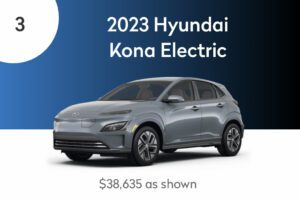So much in the vehicle industry has changed over the last ten years. With tech innovations, it’s becoming more common to see electric vehicles on the road. The electric vehicle (EV) industry is rapidly evolving, with various trends shaping its growth. Let’s explore some vital trends that have emerged, including the adoption of solar charging, the rise of EV tourism, the expansion of charging stations, improved infrastructure, the growth of the EV economy, and the increased affordability of EVs.
Charging Goes Solar
One notable trend in the electric vehicle industry is integrating solar power into charging infrastructure. Solar charging stations are becoming increasingly popular, offering a green and sustainable solution for powering electric vehicles. By harnessing the sun’s power, these stations reduce the reliance on the electrical grid and contribute to the overall environmental benefits of EVs. Solar charging provides clean energy and reduces operating costs in the long run.
Rise of Electric Vehicle Tourism
EV tourism is another exciting trend that has expanded in recent years. As EVs become more widespread, destinations are beginning to cater to EV owners by providing charging infrastructure and promoting EV-friendly routes. This trend has opened new opportunities for travel and exploration, with EV owners now able to embark on long-distance journeys confidently, knowing they can easily find charging stations along the way. EV tourism not only encourages sustainable travel but also drives the adoption of EVs by showcasing their capabilities.
Expansion of Charging Stations
There has been a significant expansion of charging station networks worldwide to support the growing number of EVs on the road. Governments, businesses, and communities are investing heavily in developing charging infrastructure to ensure EV owners have convenient access to charging points. This expansion includes deploying fast-charging stations, enabling quicker charging times, and enhancing EV ownership’s overall convenience.
Improved Infrastructure
In addition to charging stations, other infrastructure improvements are being made to accommodate the increasing demand for EVs. This includes integrating smart grids, optimizing energy distribution, and ensuring efficient charging. Furthermore, the development of wireless charging technology is underway, which will eliminate the need for physical connections between EVs and charging stations. These advancements in infrastructure are crucial for enhancing the overall EV ownership experience and overcoming range anxiety concerns.
Growth of the EV Economy
The rise of EVs has created a significant economic impact, leading to job creation and investment opportunities. Part of what makes it attractive is the shift to focus on sustainability. The EV industry has seen a manufacturing surge, with established automakers and startups investing in producing electric vehicles and related components. The growing demand for charging infrastructure has opened new business opportunities, including installing, operating, and maintaining charging stations. As the EV market continues to expand, it is expected to contribute to the growth of the global economy.
Increased Affordability
One of the most significant barriers to EV adoption is higher upfront cost of traditional internal combustion engine vehicles. However, there’s a notable trend towards more affordable EV models driven by advancements in battery technology and economies of scale. Governments and incentives are further encouraging the adoption of EVs. In offering tax credits, rebates, and subsidies, it makes them more accessible to a broader range of consumers. Major automakers such as Chevrolet, Hyundai, Nissan, and Tesla are featuring models under $40,000.

 The electric vehicle industry is experiencing several exciting trends driving its growth and adoption. Thanks to the integration of solar charging, the rise of EV tourism, expansion of charging stations and improved infrastructure, these trends are laying the foundation for a sustainable and convenient future of transportation. Furthermore, the EV economy’s growth and increased affordability make electric vehicles more attractive to consumers. As the industry continues to evolve, expectations dictate trends shape the future landscape of the electric vehicle industry.
The electric vehicle industry is experiencing several exciting trends driving its growth and adoption. Thanks to the integration of solar charging, the rise of EV tourism, expansion of charging stations and improved infrastructure, these trends are laying the foundation for a sustainable and convenient future of transportation. Furthermore, the EV economy’s growth and increased affordability make electric vehicles more attractive to consumers. As the industry continues to evolve, expectations dictate trends shape the future landscape of the electric vehicle industry.
